A study done on the relationship between humans and the natural world discovered that there is a deep need for humans to have a connection to nature for our own well-being. They found that mental health improves when people spend time wildlife watching, and Banff National Park in Canada is the perfect place to do just that. Keep reading to find out where and how you can spot these awesome animals at Banff National Park!
Overview: Types Of Animals In Banff
Canada is home to some of the most iconic animals in the world, and you’ll have the chance to see them in their natural habitat at Banff National Park. Here are a few of the species you’ll be able to see while you’re there:
Grizzly Bear
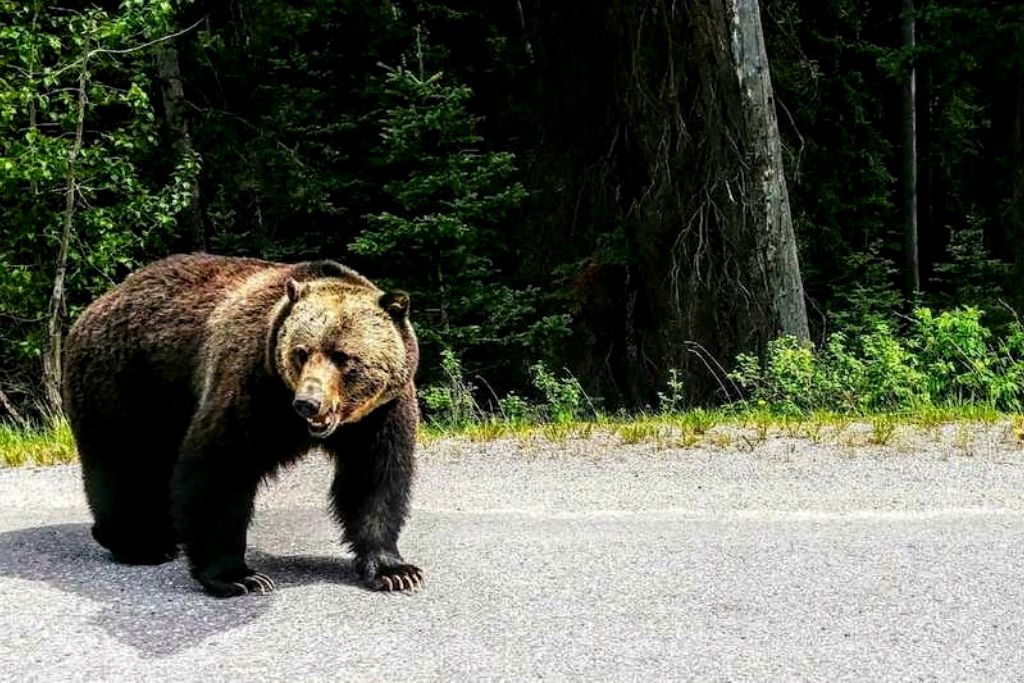
At Banff National Park, you can find around 65 grizzly bears. Grizzlies are a North American subspecies of the brown bear, and they’re typically brown in color. They receive their name from the fact that occasionally their fur may look to have white tips or be grizzled. Bear spray should always be with you since, despite their enormous size, grizzlies have been observed running at speeds of up to 30 miles per hour.
Hoary Marmot
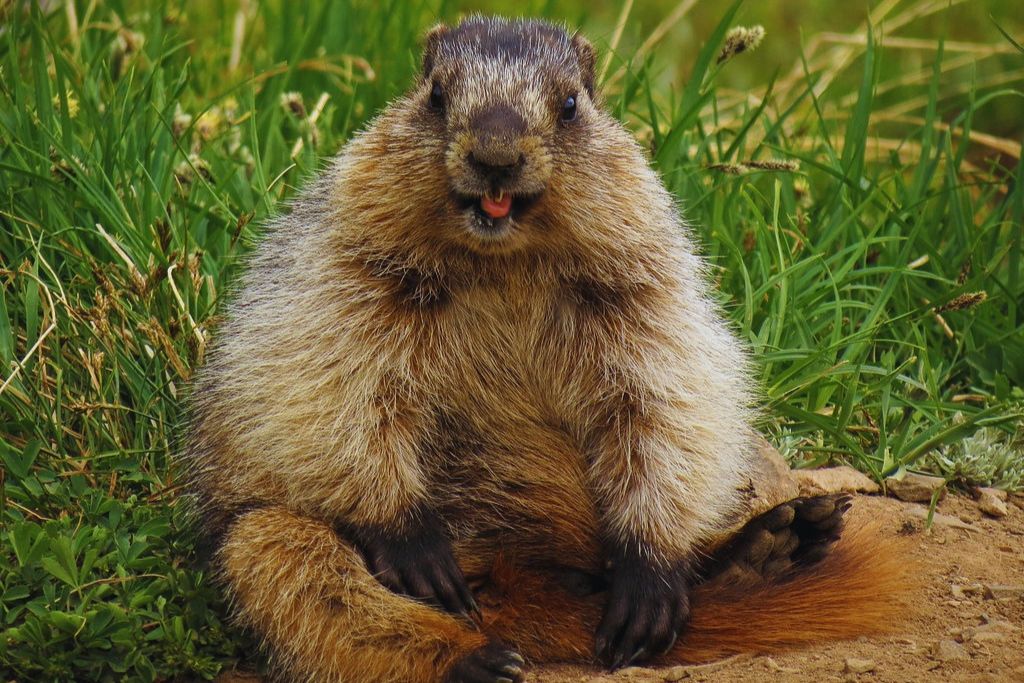
The head, shoulders, and half of the back of the hoary marmot are covered in dense, silvery-gray fur. Its long, bushy tail and the back part of its back are covered in reddish-brown fur. The snow leopard’s black feet, a white patch of fur between its small, round eyes, and the white fur surrounding its nose and lips are some of its other distinguishing characteristics. Its front and back paws both have long, curled claws. It also has short ears.
Banff Springs Snail
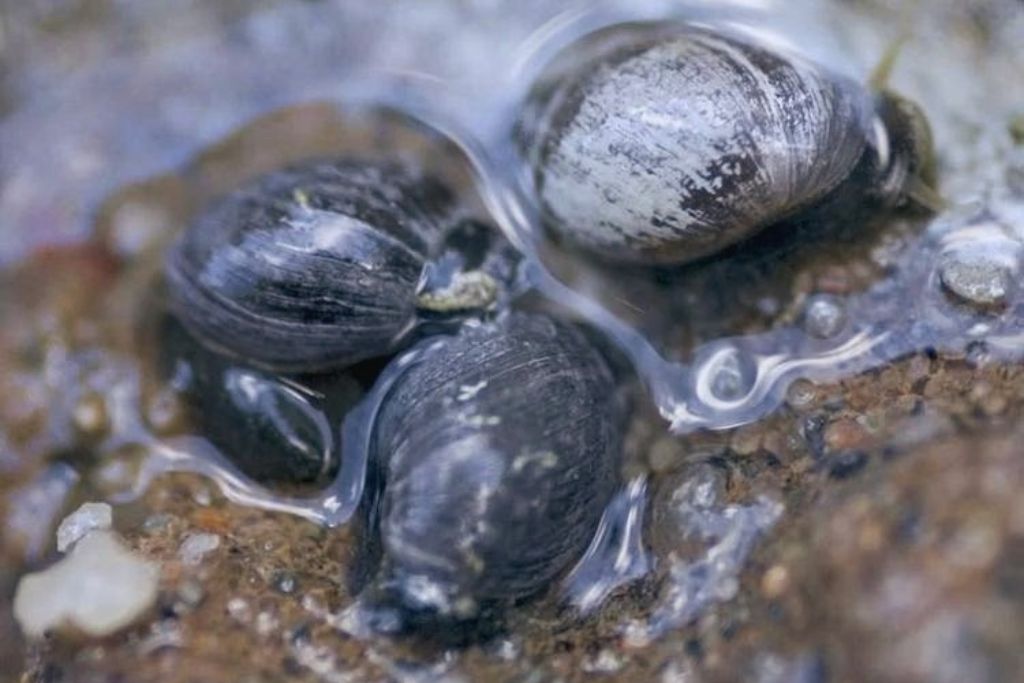
Banff National Park isn’t only a reserve for big animals. It’s also home to an endangered species of snail known as the Banff Springs snail. These snails can be found in the thermal springs where they reside and come in different colors, like light brown and almost black. Shaped like lemon seeds, Banff Springs snails are approximately the size of a popcorn kernel. The only place on Earth where you can find these snails is in the hot springs on Sulphur Mountain in Banff National Park.
Pika
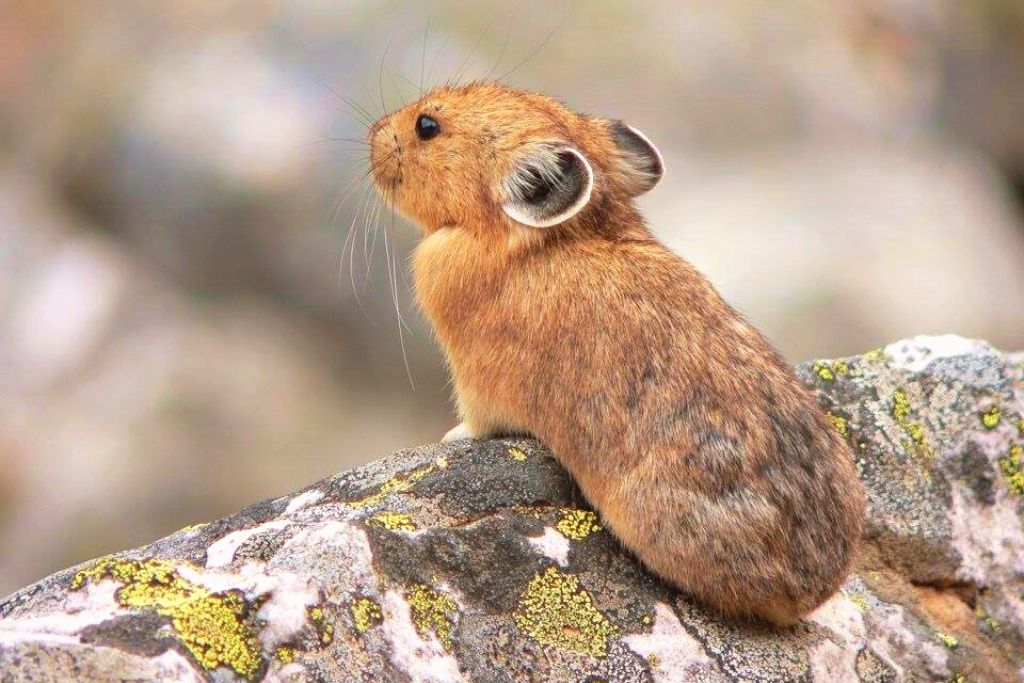
If you’re hiking at Banff, you may come across some pika. These small, furry creatures are closely related to rabbits and hares, and they live in colonies in alpine boulder fields. You can tell them apart from rabbits by their shorter limbs, rounder bodies, and lack of an external tail. Pikas collect and dry out small clumps of vegetation, which they leave on flat rocks. So keep your eyes open for “pika piles” on your hike!
Osprey

You might catch a glimpse of these magnificent birds if you look up at the blue sky while in Banff. Ospreys are large raptors reaching more than 60 cm (24 in) in length and 180 cm (71 in) across their wings. They have brown upper parts and are predominantly greyish on their head and underparts. Ospreys live near lakes and rivers where they hunt fish and small amphibians.
Elk
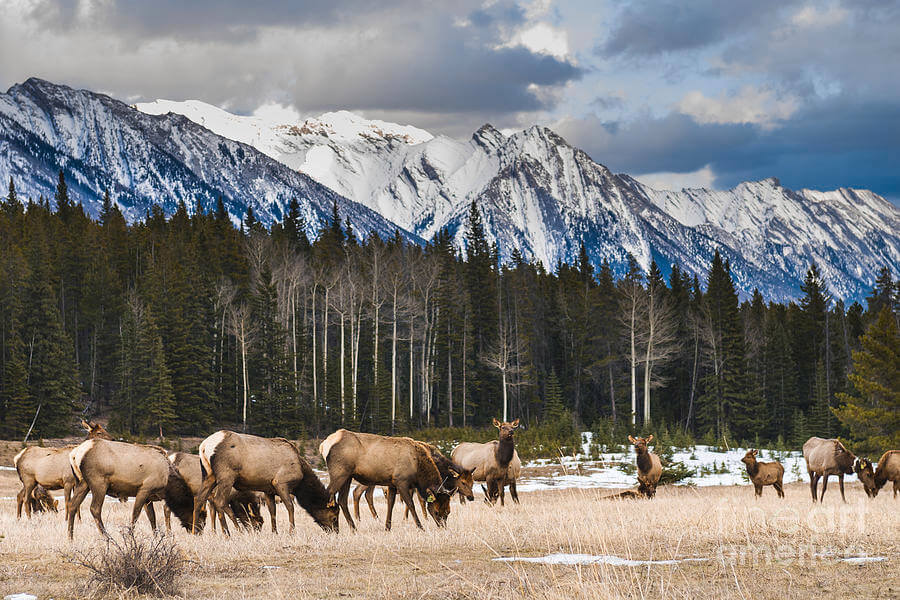
When you’re in Banff National Park, you won’t want to miss the chance to see a herd of elk! These beautiful animals have commonly seen grazing in Banff, and they make for a majestic sight. Elk are also called wapiti, a Native American word that means “light-colored deer.” Even though they are related to deer, elk are much larger than most of their relatives. For example, a bull elk’s antlers can reach up to 1.2 meters (4 feet) above its head, making the animal tower 2.7 meters (9 feet) tall.
Bighorn Sheep
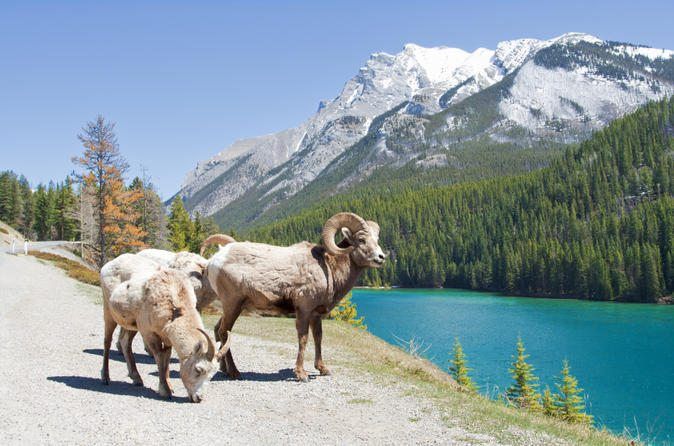
The Bighorn Sheep is Banff’s second most popular ungulate animal, coming in the right after elk! With their sandy-brown coats and white rump patch, they’re easily recognizable. Rams have large, spirally curved brown horns, while ewes boast short, spiky brown horns. Bighorn Sheep are grazers by nature and they enjoy migrating seasonally between low grassy slopes and alpine meadows.
Amazing Places To Watch Wildlife In Banff National Park
While it’s easy to spot the animals of Banff, it’s best to plan out your map to spot these wonderful creatures. Here are a few places that are best to view the Banff wildlife:
Icefields Parkway
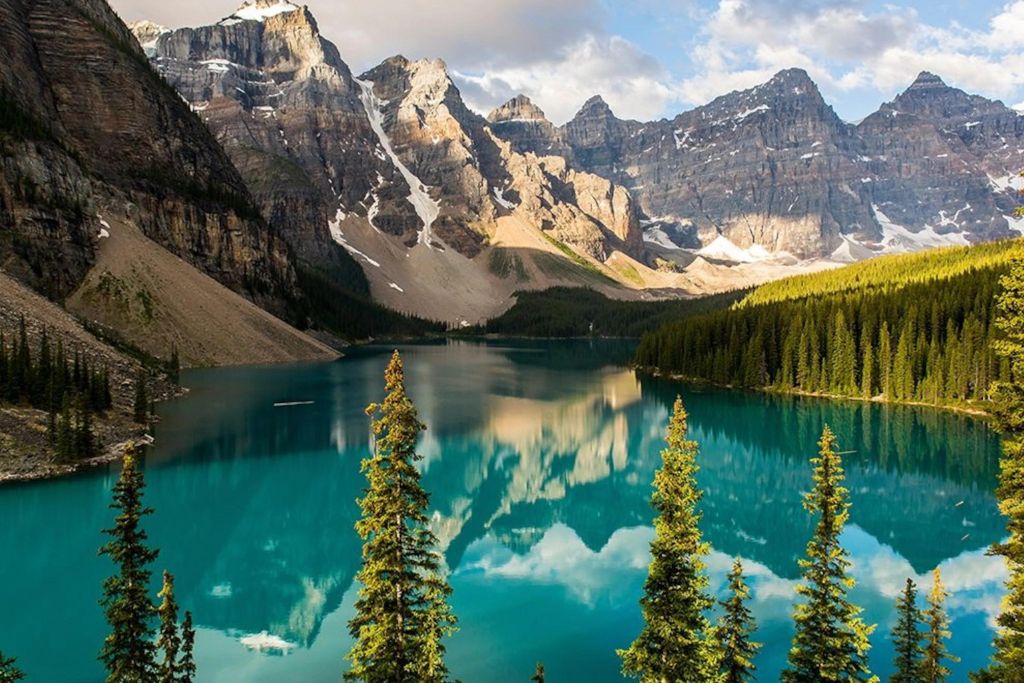
Wildlife Overpasses in Banff
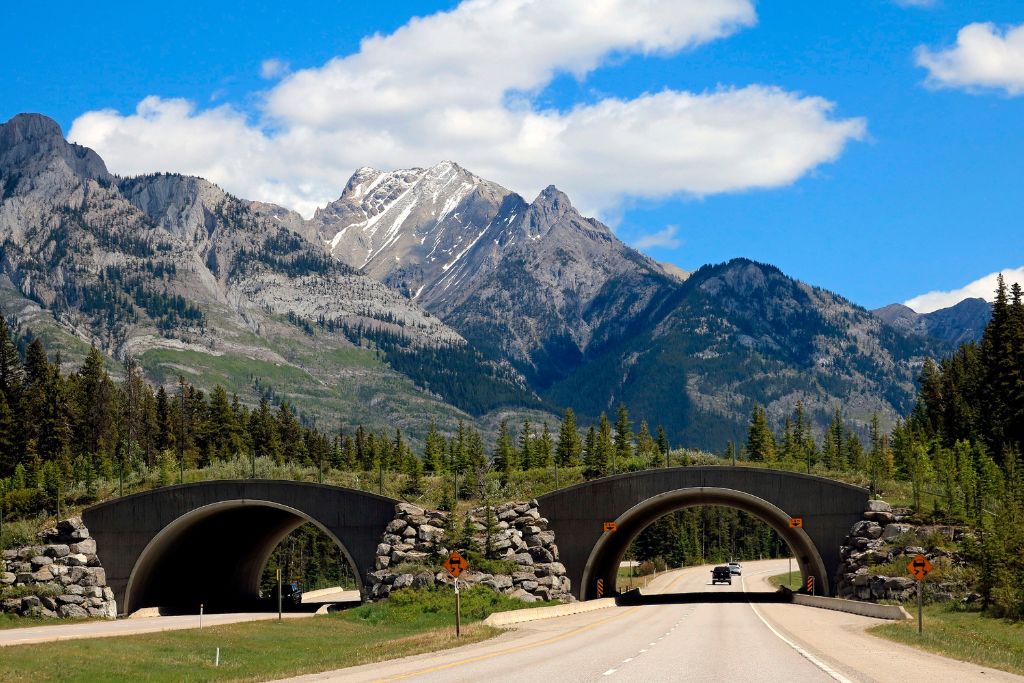
Sulphur Mountain
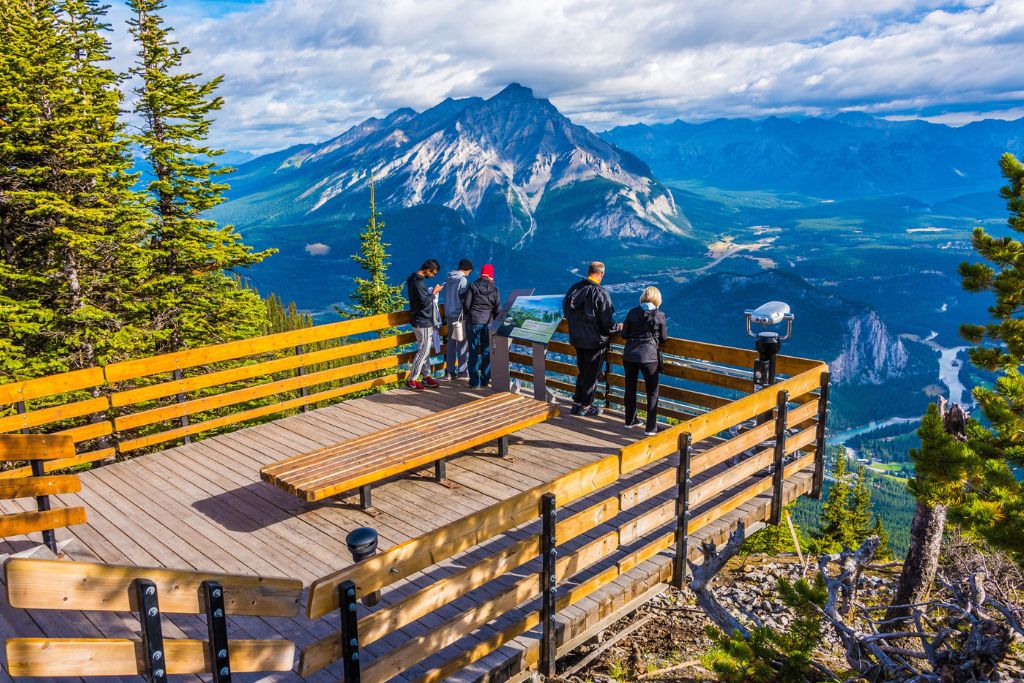
Vermilion Lakes

Banff Wildlife Spotting Tips

- Remain in your vehicle and watch at a safe distance
- Don’t feed the Banff animals
- Do your research beforehand
- Drive slowly
- Plan out your route carefully
- Remember to prepare necessary safety products
RELATED ARTICLES
Banff Wildlife Crossings: Bridges For Animals In Canada
Top 5 Unreal Lakes in Banff, Canada
10 Fantastic Expectations When Visiting Banff In Fall
